Ownership of a League of Ireland club does not make you an investor in Irish football.
“Not at all,” one proprietor told The Irish Times. “People expect a return on their investment. There is no financial gain. ‘Investors’ need to care about the club. It very quickly becomes philanthropy.”
And yet, crowds continue to rise at an impressive rate. In 2019, the turnstiles clicked in 375,705 spectators. Last year, attendances soared to 596,196. That’s an average increase of 1,200 fans across 10 Premier Division grounds.
Despite new Dundalk FC owner Brian Ainscough describing Oriel Park as a “pigsty” and League of Ireland director Mark Scanlon warning that outdated facilities are impacting on the FAI’s ability to strike lucrative broadcast deals, people still want to spend Friday nights watching their local team.
The paying public expect a few basics, such as half-decent fast food, access to beverages, usable female toilets and seats that don’t break on impact. They also want a child-friendly experience and cover from the elements.
Volunteers on the ground are doing what they can. Bohemians, for example, never dipped below 4,000 fans at Dalymount Park last season, despite the Phibsborough venue being reduced to rubble in places as it awaits €50 million in funding from local and central Government to rebuild an 8,000-capacity venue before the 2028 season.
Bohs, a members-owned club, put €100,000 into the Mono Stand, a covered terrace for 450 away supporters that enhances the already healthy gatherings in Dublin 7.
They are not alone.
“A lot of League of Ireland clubs are accused of a lack of ambition,” said Sligo Rovers chairman Tommy Higgins back in 2021. “You can’t depend on anyone else to run your football club.”
Rovers have invested €280,000 in The Showgrounds’ general upkeep since 2019 and received a €211,000 sports-infrastructure grant for floodlights.
Other club officials are quick to redirect concerns to Abbotstown and Leinster House, especially after the investors fund the playing squad, pitch repairs and rental of training complexes.
The FAI recently branded League of Ireland facilities as “archaic” when seeking annual funding of €26 million from the Government from now until 2039, with the end goal that Irish football can deliver 10 stadiums with a capacity of 10,000 each.
Currently, there is one. Tallaght Stadium.
In comparison to the GAA and other mainstream sports, it appears there has been a reluctance to seek grants and planning permission to bring soccer facilities out of the dark ages.
Since 2000, both GAA and rugby got €208,000 per club in Government grants. Football received €100,000 per club.
“We have talked to the FAI and boxing too in particular to make sure their clubs fully avail of the sports capital grants,” said Thomas Byrne, Minister of State at the Department of Sport, last year. “The GAA has always been good at networking with their clubs to make sure they apply and have resources to apply.
“And quite frankly, we have felt that hasn’t been the case with some other organisations. The ask from soccer clubs has been substantially lower than GAA clubs in last number of years, but in the last sports capital programme, every soccer club that applied, got funding.”
According to buildinginfo.com, in 2022 and 2023, GAA clubs and county boards had planning permission granted on 436 of 497 projects for an estimated cost of €314 million.
Soccer clubs, amateur and professional, had 145 of 176 plans granted for a cost of €100 million. Equestrian facilities had 82 of 101 plans granted for a cost of €91 million. Rugby clubs got 49 of 67 plans granted for €80 million while golf club renovations saw 59 of 62 plans granted for €31 million.
The Large Scale Sport Infrastructure Fund (LSSIF) is crucial to the modernisation of professional Irish sport but has yet to significantly benefit football.
Three professional rugby provinces and three prominent GAA grounds have received the lion’s share of funding since its inception in 2020.
Finn Harps got €4.7 million to reimagine Ballybofey, but €38 million went to upgrade the Sportsground in Galway, Leinster’s home venue the RDS and Munster’s centre of excellence on the University of Limerick campus, while Walsh Park in Waterford, Páirc Tailteann in Navan and St Conleth’s Park in Newbridge received €21.5 million between them.
The smart move for League of Ireland clubs is to avoid owning their stadium. Pay a five-figure monthly rent to the local council and let them turn a profit by creating a multipurpose venue. Like Tallaght.
Byrne envisages increased funding when rugby, soccer and GAA clubs form “community groups” willing to share facilities.
“We are not going to allow it to be a loophole for the football club that allows in the GAA,” he warned. “It is all about encouraging people to share facilities and make the best use of the land that we have.”
Shamrock Rovers – Tallaght Stadium
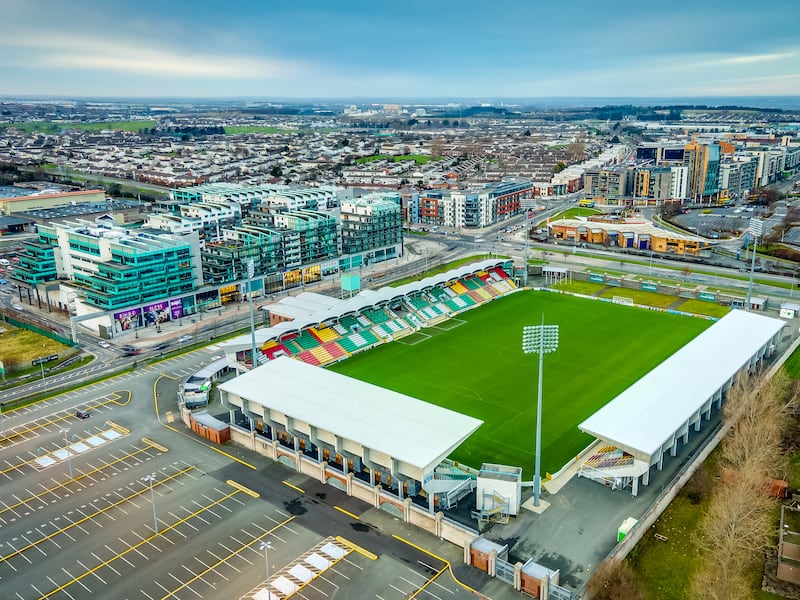
Capacity: 10,000 all-seater.
Average attendance: 2019 – 3,384. 2023 – 6,109.
Stadium owners: South Dublin County Council.
Club owner: Ray Wilson 25 per cent, Dermot Desmond 25 per cent, members 50 per cent.
Rovers pay rent of about €10,000 a month in-season, with more profitable days now ahead since the fourth stand is completed. Tallaght also hosts Ireland women’s internationals and other League of Ireland sides, St Patrick’s Athletic and Derry City, were forced to rent the venue for Europa Conference League qualifiers in 2023 as Richmond Park and the Brandywell do not satisfy Uefa criteria.
It should be noted that Tallaght, while a decent ground, pales in comparison to every stadium Rovers visited during the 2022 ECL group stages, but it suits the Hoops fanbase and allows the club to apply for grants to improve their training complex at Roadstone.
Away fan view: “The best in terms of facilities and also the biggest, so most tickets allocated.”
Bohemians – Dalymount Park
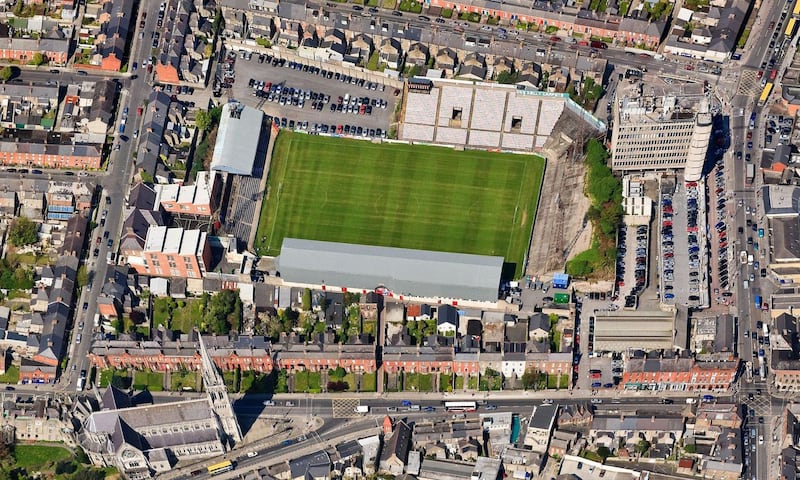
Capacity: 4,500
Average attendance: 2019 – 2,876. 2023 – 4,242.
Stadium owner: Dublin City Council (purchased from Bohs in 2015 for €3.8 million, with €3.45 million going to club creditor Zurich).
Club owner: Fan-owned.
Bohs hope to rebuild Dalymount Park from the next tranche of large-scale funding. Costs have spiralled from €35 million to €50 million, and that is presuming it can be completed before the 2028 season. Dublin City Council must contribute 30 per cent of the overall cost. Bohs will need to relocate for two years. Tolka Park, despite its proximity, is an unlikely destination, with a revamped RDS, having drawn down €15 million from the LSSIF, possibly luring them across the Liffey.
Away fan view: “The ‘Des Kelly’-end used to be the worst because it’s the same level as the pitch. Now though the new terrace is one of the best away sections in the league, good for atmosphere and view. Just a pity it’s not a bit bigger.”
Derry City – The Ryan McBride Brandywell stadium
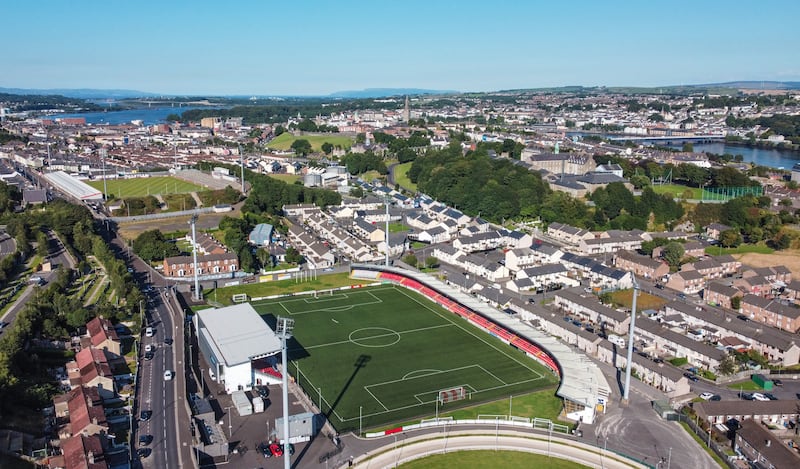
Capacity: 3,700
Average attendance: 2019 – 2,049. 2023 – 3,339.
Stadium owner: Derry City and Strabane District Council.
Club owner: Philip O’Doherty.
Last August, thousands of Derry fans took a seven-hour round trip to Tallaght after Uefa rejected a 90-minute drive to Windsor Park in Belfast as the venue must be in “the same or another city within the territory of its association”. The Candystripes lost on penalties to Kazakhstan’s Tobol Kostanay to miss out on the Conference League group stages and a €3 million windfall.
Planning permission was recently granted to build a covered north terrace that will hold 2,940 fans and increase ground capacity to 7,408 when additional work on the Mark Farren stand is finished.
Away fan view: “Decent enough, but they had a few issues last year because away fans have to exit into this big car park where there was trouble when Rovers played them.” The PSNI described it as a “minor disturbance”.
Dundalk FC – Oriel Park
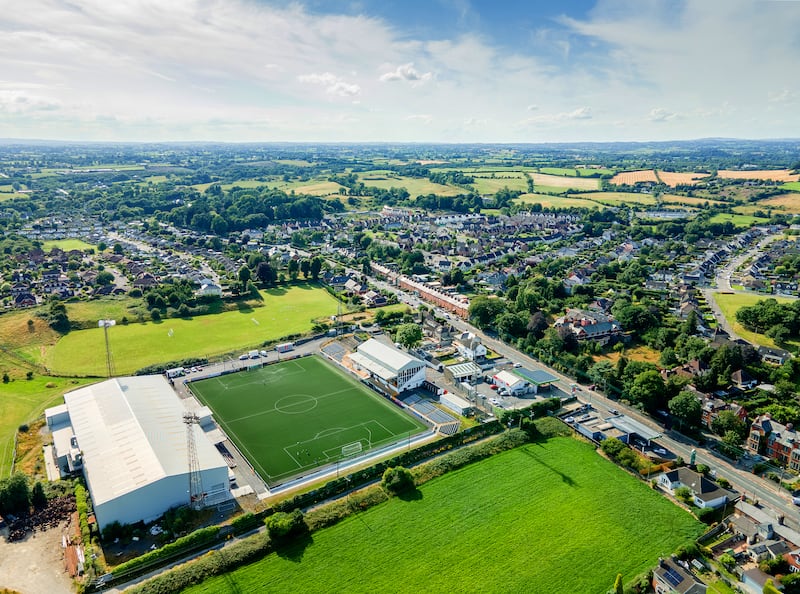
Capacity: 4,500 (3,000 seats)
Average attendance: 2019 – 2,755. 2023 – 2,642.
Stadium owner: Casey family trust leases the ground to Dundalk FC.
Club owner: Brian Ainscough.
Ainscough, the US-based Dubliner, parted ways with Kerry FC and stepped down as chief executive of Boston Bolts to focus on the takeover at Oriel Park. When he recently visited the dilapidated venue off the Carrickmacross Road for a preseason game, his seat in the main stand broke.
“I was behind you when the seat broke, and that should not happen,” Ciara Lennon, a Dundalk fan, was quoted in the Argus at an open forum with the club’s third owner inside two years. “The female toilets,” she continued – “you’re afraid that you’re going to catch something most of the time when you’re in them. The stand was filthy the other night and it was really disheartening so I’m just wondering what you’re going to do to make the facilities better here in Oriel Park?”
Ainscough replied with an apology while branding the venue a “pigsty”. He revealed that his wife will not be attending games until improvements are made. “I promise that we’re going to clean it up,” he said.
The Irish Times approached Ainscough, a former Drogheda United midfielder, to ask what this promise specifically entails. He declined to comment. Erecting portable stands behind both goals to “make the fans feel that we’re doing something” will not happen in 2024.
Away fan view: “Dundalk is the worst ground in the league by a long shot – no cover, broken seats, only a few portaloos and a fairly crap view.”
Drogheda United - Weavers Park
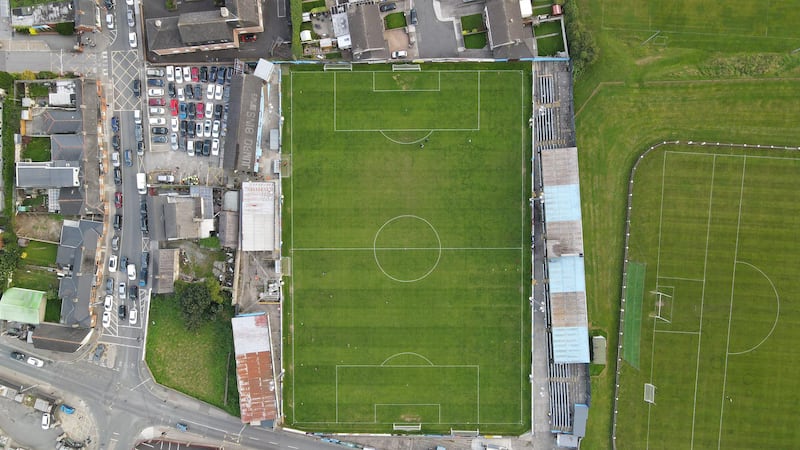
Capacity: 2,200 (600 seats).
Average attendance: 2019 – 721. 2023 – 1,917.
Stadium owner: The FAI.
Club owner: Trivela Group.
US-sports-investment firm Trivela recently added Drogheda United to their multi-club-model, which includes English League Two club Walsall FC.
“This is not just exciting for the club but the whole town,” said Joanna Byrne, a lifelong Drogs fan and co-chairperson. “Trivela come with long term plans, for decades of investment, to make the club more sustainable. We were impressed by the community values they have shown at Walsall.”
The FAI ownership of Weavers Park has created a “grey area of who was responsible” for upgrades. The immediate priority for Byrne, “who learned to walk on the pitch” as her grandad Mick chaired the club in the 1980s, are female facilities.
“I took a pregnant lady to the clubhouse on the far side to use the toilet last season. We had to walk through the away end. Repair work is needed on the gutters as well. We spend a significant amount of money for a small amount of work. A couple of hundred grand and you wouldn’t see it.”
Away fan view: “Drogheda is the best for atmosphere, it’s a falling down terrace but one of the favourites among all away fans noise-wise.”
Shelbourne FC – Tolka Park
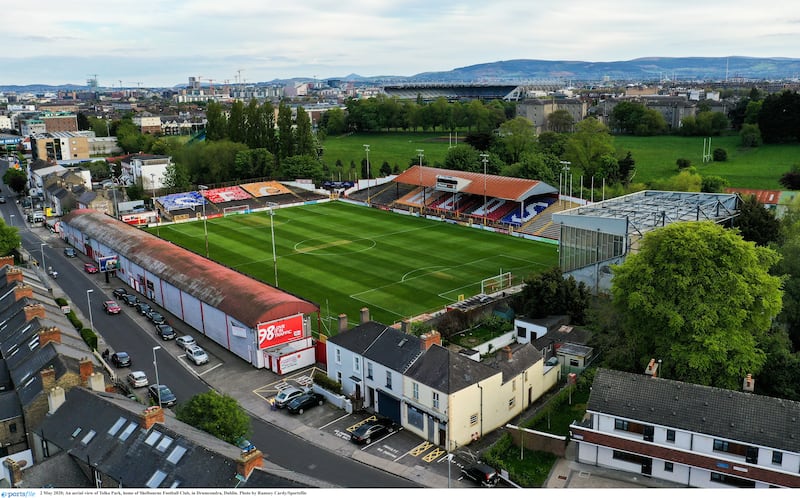
Capacity: 4,450.
Average attendance: 2019 – 1,071. 2023 – 3,393.
Stadium ownership: Dublin City Council (Shels intend to purchase the ground).
Club ownership: Mickey O’Rourke.
After the short-lived Turkish takeover, Shelbourne bounce back to reality in 2024. It’s been a fascinating 12 months since selling a majority stake to Acun Ilıcalı's multi-club model that included Hull City. With the help of Hull loanees Harry Wood and Will Jarvis, Damien Duff guided Shels into European football for the first time since 2006. However, the master plan fell apart when the management stalled over Duff’s contract extension, prompting O’Rourke to buy back the club.
The pitch is considered the worst in the league. Around €400,000 is going into a badly needed PA system, a new terrace on the Riverside end, improving the bar and toilets, so they can hold the first round of Europa Conference League qualifier. With Dublin City Council CEO Dick Shakespeare only committing to build one northside stadium, Dalymount Park, the club hope to purchase Tolka.
Away fan view: “We like Tolka because it’s a terrace but the lack of cover means it can be pretty grim if it rains and very difficult to make any noise. Toilets are dreadful.”
Sligo Rovers – The Showgrounds
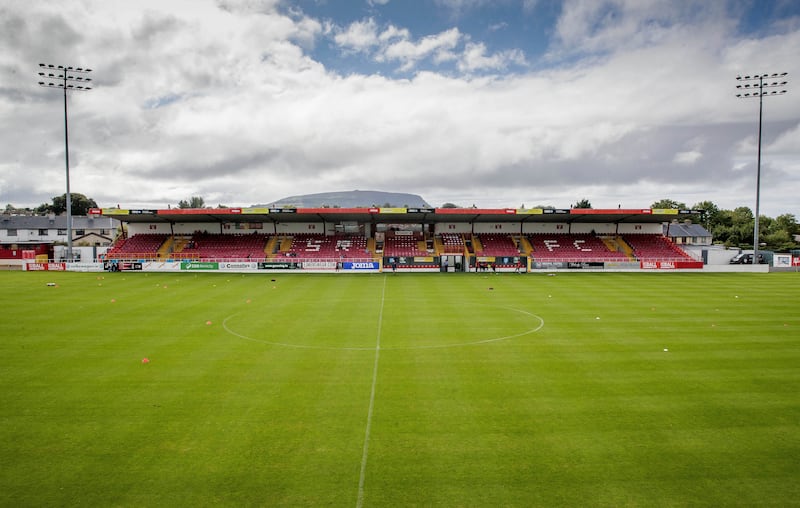
Capacity: 3,873.
Average attendance: 2019 – 1,995. 2023 – 2,555.
Stadium owner: Fan owned.
Club owner: Fan owned.
Planning permission has been granted and the Rhatigan architects design is almost complete for a 6,200 capacity groundshare with Sligo Rugby to include a cafe, restaurant, doctors’ surgery, creche, gym and business units. Initially priced at €17.3 million, these costs are expected to rise with funding via the LSSIF.
“We believe what we’re building will put the club on a good footing for the next 50, 60 years,” said Higgins.
Away fan view: “It has decent pubs beside the ground which a lot of places don’t. Also has one of the better chippers in the league. Away section is well covered and a good view so not much to fault, also a good town to get the train to and do an overnighter.”
St Patrick’s Athletic – Richmond Park
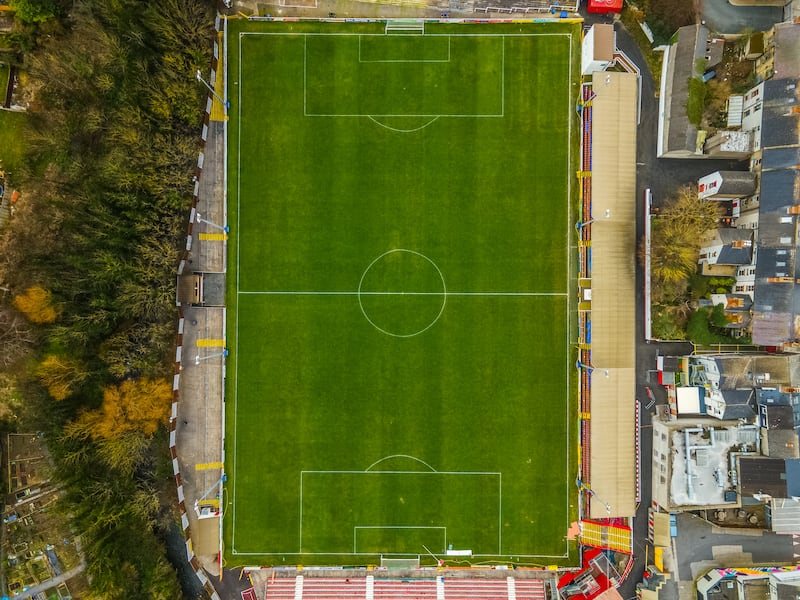
Capacity: 5,340 (2,800 seats)
Average attendance: 2019 – 1,919. 2023 – 4,232.
Stadium owner: Club-owned.
Club owner: Garrett Kelleher.
Plans to create a 12,000-capacity stadium at the nearby St Michael’s Estate, alongside a shopping centre and 200 residential units, came undone under previous housing minister Eoghan Murphy. Ideally, by its centenary in 2029, St Pat’s can transform Richmond Park into a place that caters for attendances that have increased by 2,300 since 2019. DDC bought 119 and 133 Emmet Road with the potential for a compulsory purchase order for other properties that would allow a revamp of the Inchicore venue, nestled between the river Camac and a row of red bricks.
Between €150,000-€200,000 is spent annually on Richmond’s upkeep with two full-time grounds staff. Also, remedial work to host European games is hindered as they cannot install seats on the Camac-side.
Away fan view: “Used to be a lot better for atmosphere when the Shed still had the roof. Still not one of the worst because capacity is nearly 1,000 but uncovered so not great if it’s raining.”
Galway United – Eamonn Deacy Park
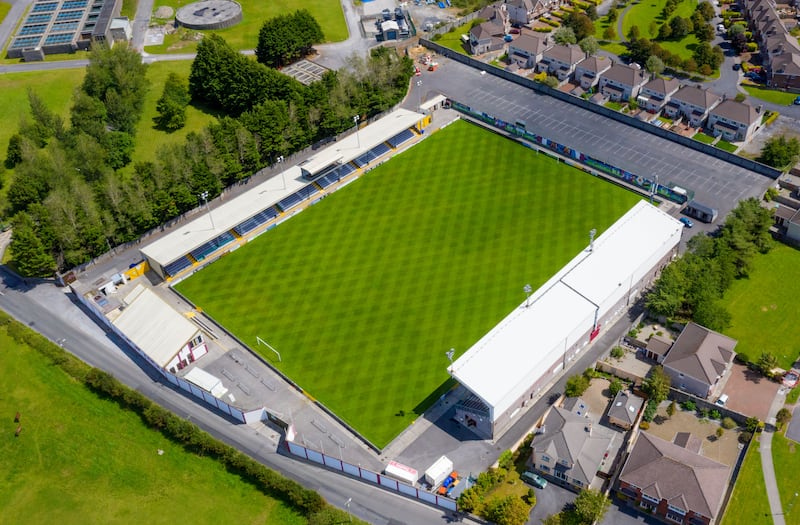
Capacity: 5,000 (3,300 seats).
Average attendance: 2019 – 780. 2023 – 2,012.
Stadium owner: Galway FA.
Club owner: The Comer Group.
“Without the Comers we wouldn’t have a club,” said a Galway United spokesperson. The billionaire property developers, brothers Luke and Brian Comer, took a majority stake in United two years ago. They plan to develop a centre of excellence that Connacht Hockey would also use, although planning permission for a Comer-owned-site near Athenry was refused in 2022.
Away fan view: “All away fans will be looking forward to the Galway trip this year. Decent away section.”
Waterford – Waterford Regional Sports Centre
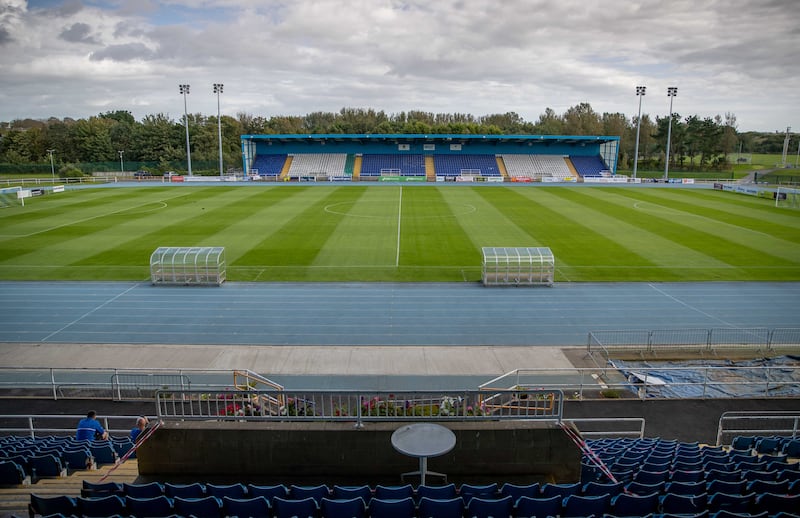
Capacity: 5,160 (3,100 seats).
Average attendance: 2019 – 1,496. 2023 - 1,832.
Stadium owner: Waterford City and County Council.
Club owner: Powergrade Ltd.
Andrew Pilley took “full ownership” of Waterford FC in August 2022. Last July, Pilley was sentenced at Preston Crown Court to 13 years in prison for fraud and money laundering of approximately £15 million. His son, Jamie Pilley, has assumed operational control of the club. The club just agreed a 50-year lease to stay at the RSC with €260,000 spent by the council on floodlights.
Away fan view: “Looking forward to getting back to Waterford this year. Decent away section and a great trip.”
Sign up for push alerts and have the best news, analysis and comment delivered directly to your phone
- Find The Irish Times on WhatsApp and stay up to date
- Our In The News podcast is now published daily - Find the latest episode here











